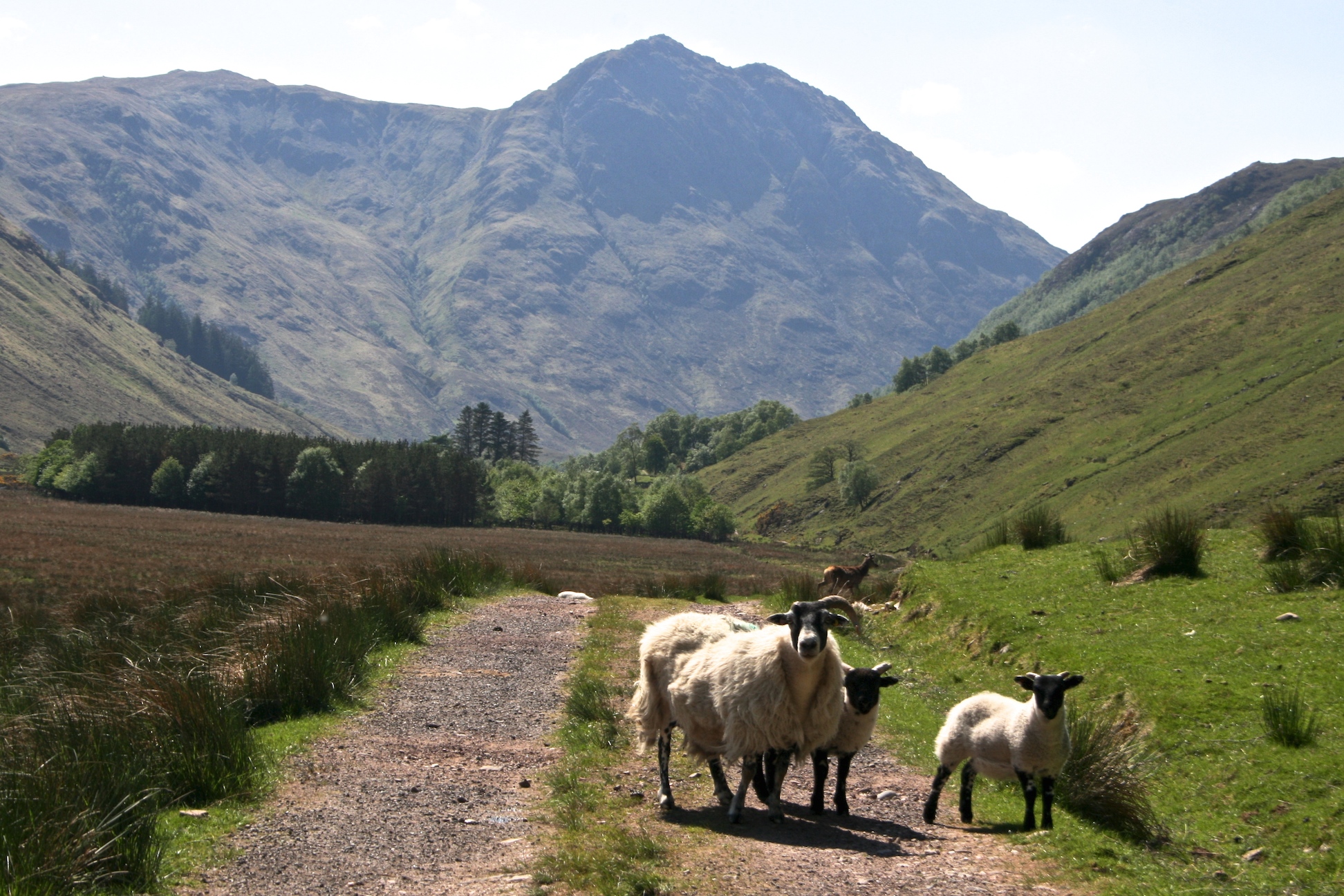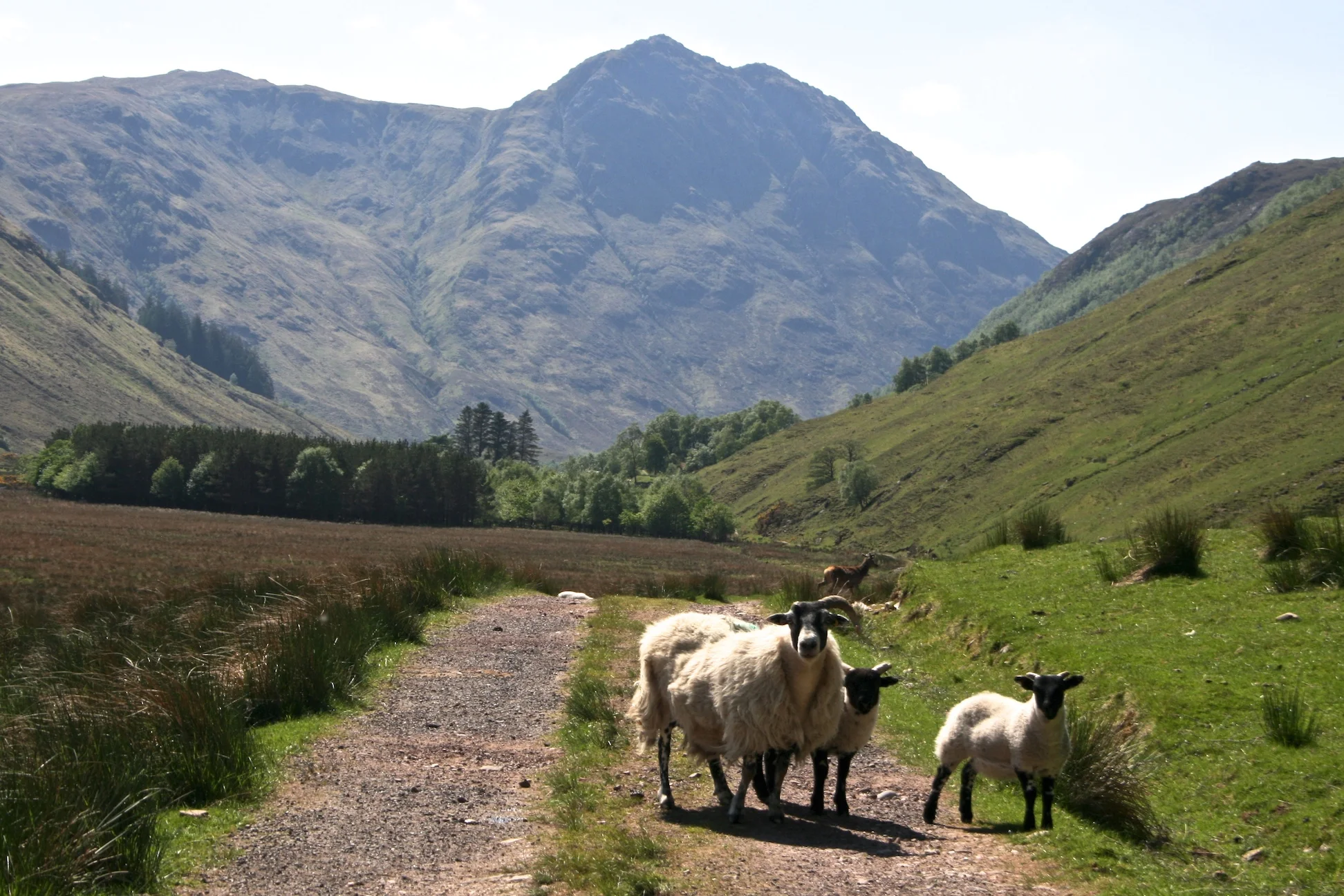Our Top Tips to Hike the Cape Wrath Trail Fast and Cheap
There is a lot of really great info online about the Cape Wrath Trail. So much so that we were surprised when we showed up and it actually was as remote as everybody told us. The bog has a way of swallowing up all the footprints.
First off, if you're planning to hike this epic trail, check out the Walking Highland's site. It is incredible, and has most of what you need to get going.
Some things, however, definitely took us by surprise. Here's our advice after spending two weeks on the Cape Wrath Trail, with links to the most helpful articles online, plus our own (slightly adapted) itinerary, here.
The Details
WHEN TO GO
We completed the trail during the second half of May, 2018. For us, it was damn near perfect. We got 1.5 days of rain, which is absolutely unheard of in Scotland. Even in a bad year, May is still probably the best time to go. The weather is getting warmer, but the midges aren't yet out - and we would highly recommend avoiding the midges. They just started to arrive on our last day and they sent us running. We literally could not sit down to eat dinner and instead wandered loops around our tent while spooning in mouthfuls of subpar curry.
THE DIRECTION
Most online guides will direct you to hike the Cape Wrath Trail from South to North. This has some clear advantages. It's easier to find itineraries going in this direction, easier to reach the start of the trail, more downhill, and leaves you with a spectacular finish.
HOWEVER, we chose to hike from north to south and were glad we did. The trail is easier on the knees this way, and it's still pretty fucking hard on the knees.
But mostly, it boils down to logistics. For the budget traveller, it makes transportation a whole lot easier to organize in advance. It's wayyy harder to get to Cape Wrath than Fort William, so starting there allows you to manage everything before you leave without worrying that something will change on the trail and leave you stranded. Plus, it means you'll be able to check up on the MOD and avoid missing the highlight of the hike. More on that below.
WHAT'S A MOD?
Cape Wrath is contained within a military firing range. Most of the time, it's totally fine to walk through. But, sometimes, the whole area is closed - and actually really dangerous.
There's no definite way to ensure that the area will be open when you're there. The best bet is to check the website - they tend to update firing dates about a month in advance. If you choose to hike from south to north and don't have internet, ask people when you get close. There should be red flags indicating danger, but don't take any chances!
HOW MUCH TIME
We read a really awesome article about a guy that managed this trail in 11 days - which we would highly recommend by the way. However, it made us think that as fit (relatively, in Tori's case), young, experienced hikers we could complete this trail no problem in 12 days. Well, two weeks including travel days.
Turned out that was not the case. We were only able to complete the trail in that timeframe with significant alterations - both hitch hiking and alternative routes. And some days we were pushing 12 hours. It took us WAY longer than the times indicated on the Walk Highland's site, and we're normally the kind of people that beat estimates by at least an hour.
Our best recommendation is to be open to change - whether adjusting the amount of time you spend on the trail or skipping certain sections like us. It's very hard to figure out how long things will take. There are simply too many factors to take into account: fitness, health, weather, and navigation to name a few.
FINDING THE TRAIL
The rumors are true: there is no trail for most of the Cape Wrath. It's sort of a series of shorter routes linked together with long areas of open bog land in between.
Many people swear by the Harvey map. We actually took a few screenshots of one we borrowed at a bothy. The best thing about the map is that it shows quite a few variations of the trail. There are a lot of these, which is the most confusing part of hiking it.
However, we got by using maps.me just fine - by far our favorite travel app and absolutely irreplaceable for hiking. You can open the Google Earth files on Walking Highlands with it. It makes getting lost a lot less time consuming. We suggest packing a battery pack or solar charger so you don't get stuck, though.
It's probably also a good idea to pack a compass, just in case. Still it's not the most remote trail in the world. You're usually a couple hours' walk from a house or road.
TRANSPORTATION
It took us a train, bus, and ferry to get to Cape Wrath and a ferry, hitch hike, and bus to get back from Fort William. We think you could do most of it by hitch hiking, though, and save a whole lotta money.
On the trail, we skipped two sections by hitch hiking. It was super easy (there were two of us: Stefan with a big beard and Tori with a pink rain jacket) and fun to meet some local Scots.
COSTS
We hiked the Cape Wrath Trail as a budget trip. All in all, we spent $311.26 or £243.65 over two weeks for the two of us. This includes all food, transport to and from Edinburgh and within the trek, and accommodation (although that was all free). It doesn't include any of the camping gear we already had.
You can see a detailed budget report for our time in Scotland here. That includes the days on the trail and another two spent preparing/recovering in Edinburgh.
FOOD
We carried food for the whole 14 days. Our knees did not thank us, although our stomachs did because some of that was food we had dehydrated at home! The rest was purchased for very cheap at the Lidl in Edinburgh.
If you don't want to carry all your food, we suggest bringing half and stopping off at Ullapool. You can easily get a bus or hitch hike there from Inverlael, about half way through the trek. However, it will be more expensive.
And, it'll be even more pricy if you want to use the tiny shops in some of the villages along the way or eat at guesthouses/pubs. We don't have any information on those options, because we didn't even consider it, but there's plenty of guides out there for that style of hiking too.
WHAT TO BRING
A standard pack should suffice for this trip. In fact, we went pretty light and didn't think that any of the special gear some people tell you about was necessary. But that's also not our style.
Here's a few things that we thought were important or would have liked to have:
Trekking poles - Tori really fucked up her knee and these would have been super helpful for the bog
Proper hiking boots - we never, ever wear boots (even trekking big mountains in Nepal and Peru) and instead prefer lightweight trail runners or hiking sandals. You need all the ankle support you can get on this trail, though. You can pack gators or neoprene socks, but you'll still get wet
Solar charger - absolutely essential if you want your phone/gps to last and you don't plan to stop at any guest houses along the way
Ground tarp - try to save your tent from the bog: any micro-tears will spell disaster and leave you soaked
Bug spray - don't even think of leaving home without it if you're going in midge season!
ACCOMMODATION
Our itinerary details where we slept each night, because that was one of the most stressful things for us along the way. Remember you can camp anywhere, but it's not always easy to find a spot (bog, rocks, etcetera). Plan accordingly.
We spent half of our nights in bothies, and had so much fun in them. A warm fire makes the trek a hell of a lot more manageable. They were actually our favorite thing about our entire time in Scotland.
If you haven't heard of bothies, read our article here. They are a reason in and of themselves to go to the highlands.
DIFFICULTY
This is... complicated. Altitude and elevation wise, this trek looks like a piece of cake. And it is. Really. It also has a relatively temperate climate in summer, although of course the rain can make it hard. Plus, you're always close to civilization and the bothies mean that you don't have to spend every night in the tent.
The hardest thing about it is the bog. We've never walked in anything like it, and it was really, really hard for Tori. It can get even worse in rainier weather.
It can be extremely slow going and very painful on the joints. This is especially true when you get lost navigating through it.
Introduce yourself gently to the new terrain and pack accordingly (hiking boots, trekking poles, braces if necessary). Maybe you won't have any trouble, but better safe than sorry! And you want to give yourself the best chance of finishing.
Got any more questions? Your own thoughts about the Cape Wrath Trail? Let us know below.





